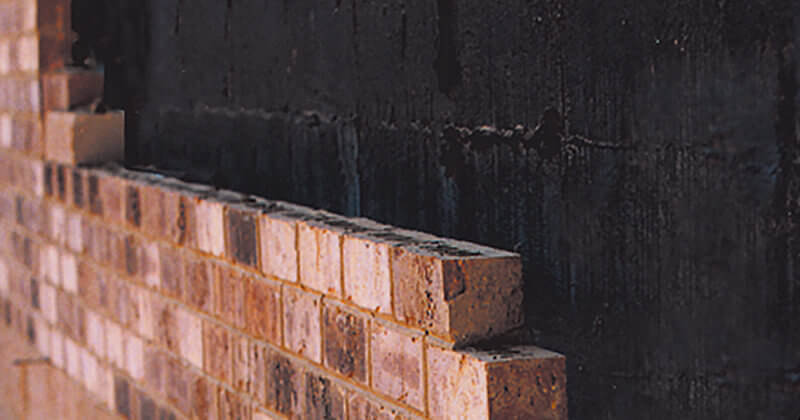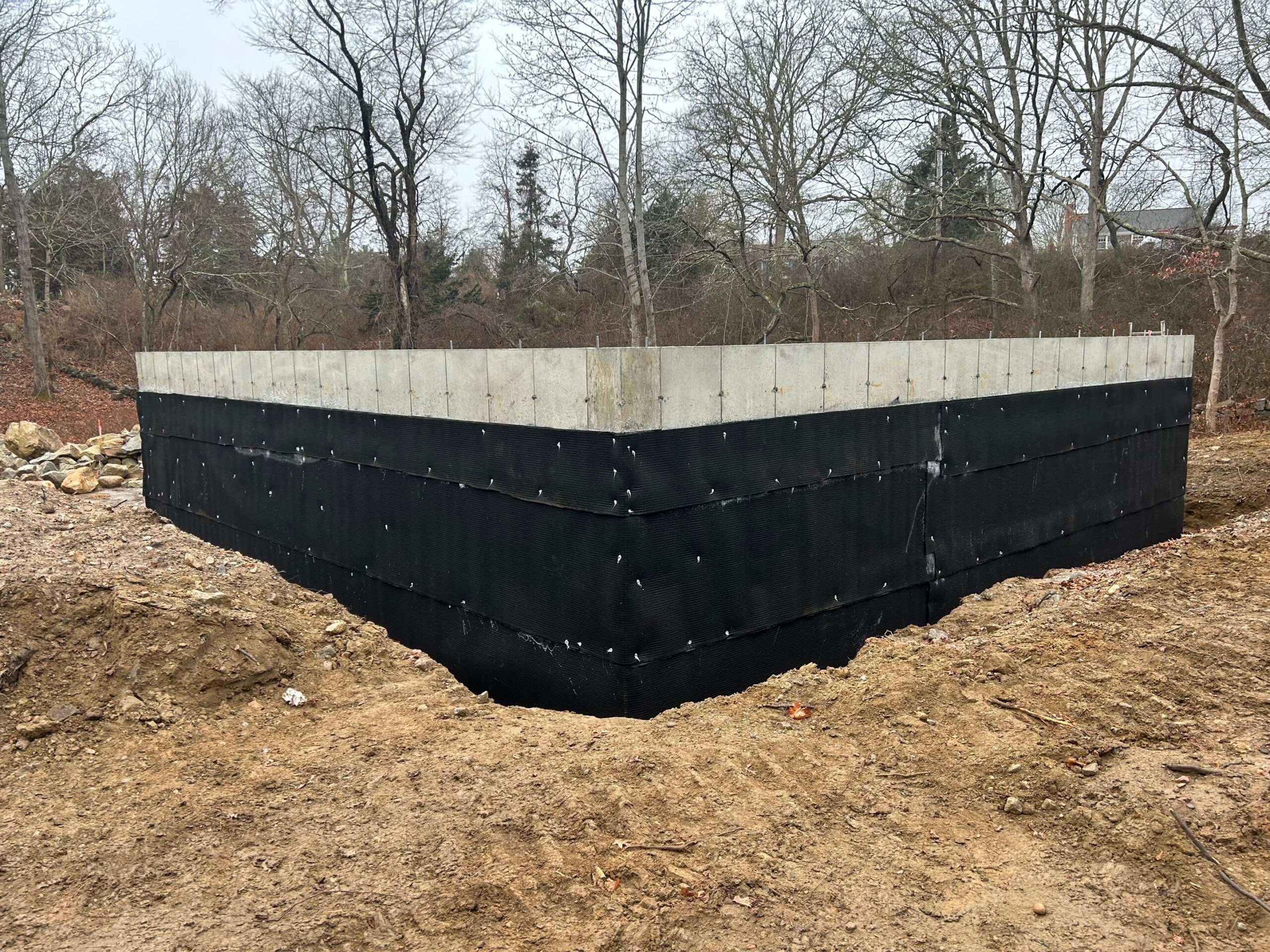Could your home be at risk? Use this guide from damp specialist newcastle to find out
Could your home be at risk? Use this guide from damp specialist newcastle to find out
Blog Article
Discovering the Different Methods and Solutions for Effective Damp Proofing
Wetness in structures poses considerable difficulties to both structural stability and interior air top quality. Various methods and options have emerged to battle this prevalent problem. From traditional damp-proof membrane layers to cutting-edge chemical treatments, each technique offers one-of-a-kind benefits. Recognizing these alternatives is important for reliable moisture control. Choosing the appropriate solution depends on specific structure problems and requirements, motivating further exploration into the most efficient moist proofing approaches available.
Recognizing the Root Causes Of Wetness
Dampness can emerge from different resources, understanding these reasons is crucial for effective remediation. Generally, wetness originates from three key sources: rising wet, passing through damp, and condensation. Increasing moist takes place when groundwater takes a trip upwards via permeable materials, such as brick or stone, frequently because of an absence of an efficient obstacle (damp removal newcastle). Passing through moist is commonly brought on by outside factors, consisting of roofing system leaks, faulty seamless gutters, or damaged wall surfaces, permitting water to infiltrate a property. Condensation, on the other hand, results from excess wetness airborne, frequently exacerbated by bad air flow and temperature differences, resulting in water beads basing on surfaces. Determining these underlying issues is vital, as each sort of wetness needs a customized technique for removal. Correct analysis aids in identifying one of the most efficient services, eventually guarding the structural stability of a structure and boosting interior air high quality
Conventional Damp-Proof Membranes

Chemical Damp-Proofing Solutions
Chemical damp-proofing solutions use an innovative approach to avoid dampness invasion in buildings. These approaches commonly include the application of fluid chemicals that permeate masonry and form a barrier against increasing damp. Commonly used chemicals include silanes, siloxanes, and various other water-repellent agents that react with surface area materials to develop a hydrophobic layer.The application process generally requires drilling holes into the wall surfaces, infusing the chemical remedy, and enabling it to heal. This technique is specifically advantageous for older frameworks where conventional damp-proof membranes might be unwise. Chemical damp-proofing can be less turbulent and much more cost-effective than substantial remodelling projects.While efficient, these remedies depend on proper application and ecological problems for peak performance. damp removal newcastle. Routine maintenance and tracking are important to ensure the longevity of the damp-proofing therapy. On the whole, chemical damp-proofing stands for a versatile option for safeguarding structures versus moisture-related damage
Tooth Cavity Wall Surface Building And Construction Strategies
Cavity wall building strategies provide many benefits, especially in wetness control and power effectiveness. By including an air gap between two layers of stonework, these wall surfaces properly mitigate water ingress while improving insulation. This combination not only protects structures from wetness but likewise adds to minimized power intake.
Advantages of Cavity Walls
When thinking about effective wet proofing techniques, the benefits of dental caries walls stand apart plainly. Dental caries walls include 2 separate layers, creating an air space that successfully reduces dampness penetration. This style reduces the threat of wetness, as the outer wall functions as a barrier against rain and water access. Furthermore, tooth cavity walls boost thermal insulation, which adds to energy performance by decreasing heat loss. They also offer sound insulation, helping to develop a quieter interior setting. The air space permits for air flow, which assists in dampness control and lowers the possibility of mold and mildew development. These benefits not only boost the overall convenience of a building yet also add to its durability and structural integrity.
Dampness Control Approaches
Effective dampness control strategies are important in dental caries wall surface building and construction to guarantee long-term security versus dampness. One key technique involves the incorporation of weep openings, which facilitate water drainage from the cavity, preventing buildup. Additionally, using breathable membrane layers can assist handle wetness levels while allowing entraped vapor to leave. Proper positioning of insulation is also essential, as it must not block drainage courses. Furthermore, making certain that the outer fallen leaves of the tooth cavity wall are created with waterproof materials improves total toughness. Normal upkeep checks are necessary to determine any obstructions or damage early, protecting the structure's integrity. Eventually, a mix of these techniques forms a durable protection versus moisture intrusion in tooth cavity wall surfaces.
Insulation and Energy Effectiveness
Insulation plays an important function in enhancing power effectiveness within cavity wall surface building and construction. By including insulating products, these walls develop a thermal barrier that reduces warm loss and minimizes power intake. Reliable insulation not only assists maintain a stable indoor temperature level yet additionally alleviates the danger of moisture, as it stops condensation within the wall cavity. Different strategies, such as using inflexible foam boards or mineral woollen, can be used to attain optimal insulation performance. In addition, proper installation is vital to assure that spaces and spaces are reduced, which can otherwise jeopardize energy efficiency. Inevitably, a well-insulated tooth cavity wall adds substantially to total sustainability and reduces cooling and heating costs for homeowners.
Outside Damp Proofing Approaches
Outside damp proofing methods are vital for securing frameworks from moisture seepage. 2 effective techniques include the application of water resistant membranes and the setup of French drains pipes. These remedies help reduce water build-up and preserve the stability of structures.
Waterproof Membrane Application
While various techniques exist for stopping moisture ingress, the application of waterproof membranes remains a highly efficient exterior wet proofing technique. These membranes are usually made from materials such as polyethylene, rubber, or modified asphalt, providing a durable obstacle against water penetration. The setup process entails using the membrane layer to the exterior surfaces of walls or foundations, guaranteeing full coverage to prevent leaks. Appropriate adhesion and sealing at joints are crucial to making best use of effectiveness. Water-proof membranes can be applied in numerous types, consisting of liquid finishes and sheet membrane layers, enabling flexibility based upon the particular requirements of the structure. This method not only shields buildings from wetness yet also improves their long life and structural stability.
French Drainpipe Setup
One efficient technique for taking care of groundwater and preventing wetness accumulation around a building's foundation is the installation of a French drain. This water drainage system includes a trench filled with gravel and a perforated pipeline that reroutes surface area water away from the structure. Correct installment requires careful planning, making certain that the drain inclines far from the structure to help with optimal water circulation. Additionally, the area of the drain is vital; it should be placed in locations vulnerable to pooling or excess moisture. Normal upkeep, including cleaning debris from the gravel and guaranteeing the pipeline remains unhampered, is essential for long-lasting efficiency. Inevitably, a well-installed French drain can greatly decrease the risk of water-related issues in structures and cellars.
Inside Waterproofing Techniques
Interior waterproofing methods are essential for shielding a building's inside from moisture infiltration and possible water damages. These strategies normally entail the application of customized materials and methods developed to produce a moisture obstacle within the structure. One common approach is the use of water-proof coatings or sealers on walls and floors, which protect against dampness from passing through surfaces.Additionally, installing interior drain systems, such as sump pumps, can properly handle water buildup in basements and crawl areas. An additional approach mould removal newcastle entails making use of vapor obstacles, which are set up to hinder wetness movement from the ground right into living spaces.Moreover, resolving any kind of splits or spaces in walls or structures with appropriate sealants assures a detailed protection versus water intrusion. By implementing these indoor waterproofing techniques, homeowner can greatly lower the threat of mold and mildew growth, architectural damages, and other moisture-related issues. Correct execution of these techniques is crucial for long-lasting security and building integrity.
Regular Upkeep and Inspection Practices
Normal maintenance and examination techniques are important for ensuring the lasting performance of moist proofing options in any type of structure. Regular checks make it possible for home owners to recognize early indicators of wetness invasion, such as peeling paint, mold growth, and mildewy smells. These indicators can indicate underlying concerns that require prompt attention.Inspections need to be performed a minimum of yearly, concentrating on susceptible areas like basements, creep areas, and outside wall surfaces. Throughout these evaluations, home proprietors should take a look at sealers, water drainage systems, and air flow to confirm they work correctly.Additionally, keeping downspouts and seamless gutters is vital, as clogged systems can lead to water buildup near the structure. Executing a routine maintenance schedule, in addition to timely repair work, can substantially expand the lifespan of moist proofing procedures and safeguard the structural integrity of the building. Positive steps ultimately add to the general wellness and safety and security of the living atmosphere.
Frequently Asked Concerns
How Long Does Damp Proofing Typically Last?
The duration of damp proofing performance differs, usually lasting in between 20 to 50 years. Aspects such as application top quality, ecological conditions, and upkeep techniques considerably affect the durability of the moist proofing therapy.

Can I Damp Evidence My Home Myself?
The private pondered the feasibility of DIY damp proofing. With proper research and the best materials, it is possible. Nevertheless, they likewise identified the value of specialist assistance to ensure durable performance and protect against future problems.
What Are the Indications of Inadequate Damp Proofing?
Indications of inadequate wet proofing include persistent stuffy smells, noticeable mold development, peeling off paint, moist spots on walls, and wood degeneration - damp proofing newcastle. Home owners ought to resolve these concerns without delay to stop further damage and health worries
Does Damp Proofing Affect Indoor Air Quality?

Just How Much Does Professional Damp Proofing Price?
Expert moist proofing prices differ substantially, normally varying from $1,000 to $5,000 depending upon the residential or commercial property's dimension, the level of the moist issue, and chosen methods. Each scenario calls for a tailored analysis for exact prices. Commonly, dampness stems from 3 primary sources: climbing moist, permeating moist, and condensation. When thinking about reliable moist proofing techniques, the benefits of tooth cavity wall surfaces stand out prominently. Outside moist proofing methods are vital for securing frameworks from dampness infiltration. While different methods exist for preventing dampness access, the application of waterproof membrane layers remains a very efficient outside wet proofing technique. Signs of inadequate damp proofing consist of persistent stuffy smells, visible mold growth, peeling off paint, wet patches on wall surfaces, and timber degeneration.
Report this page